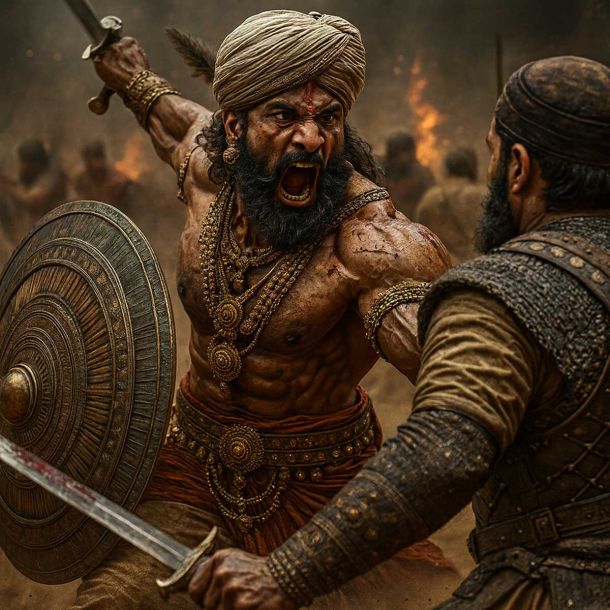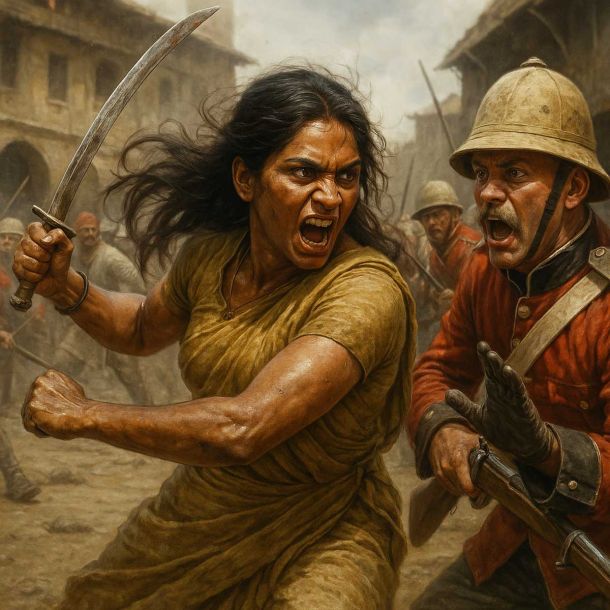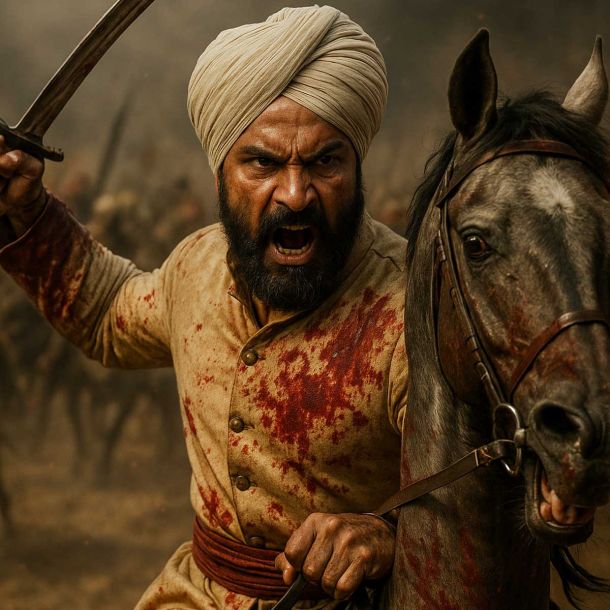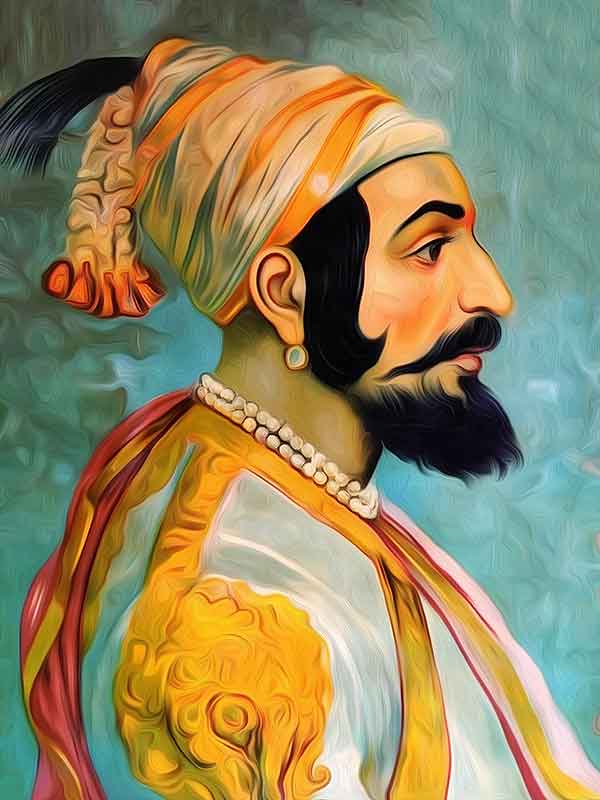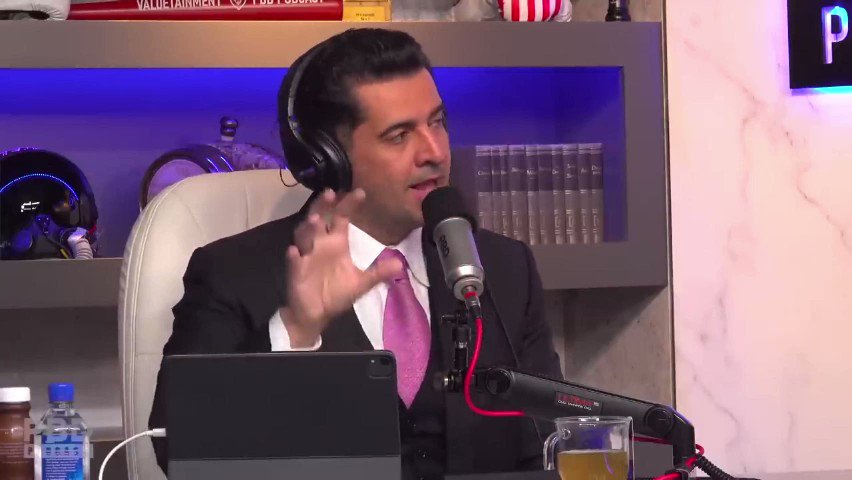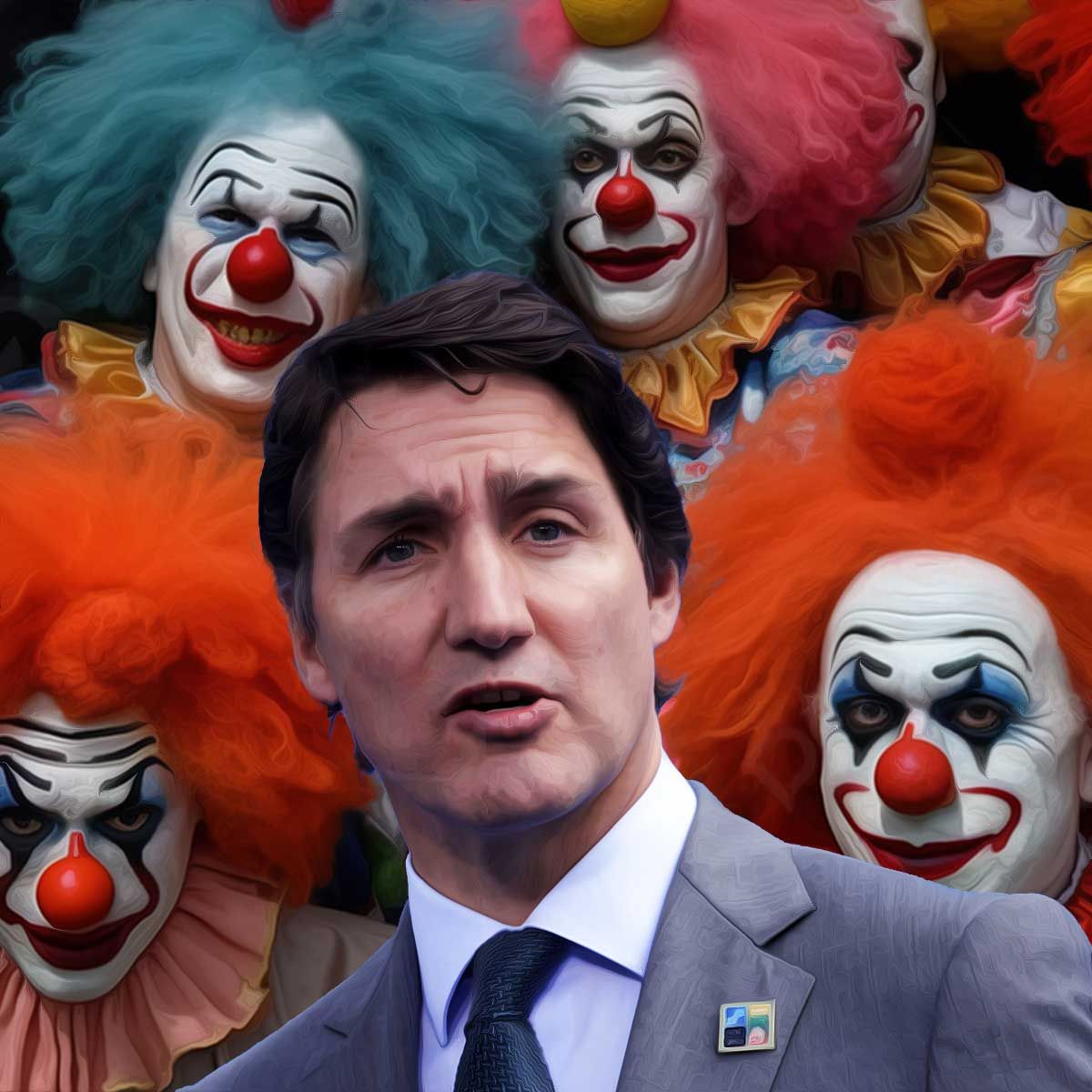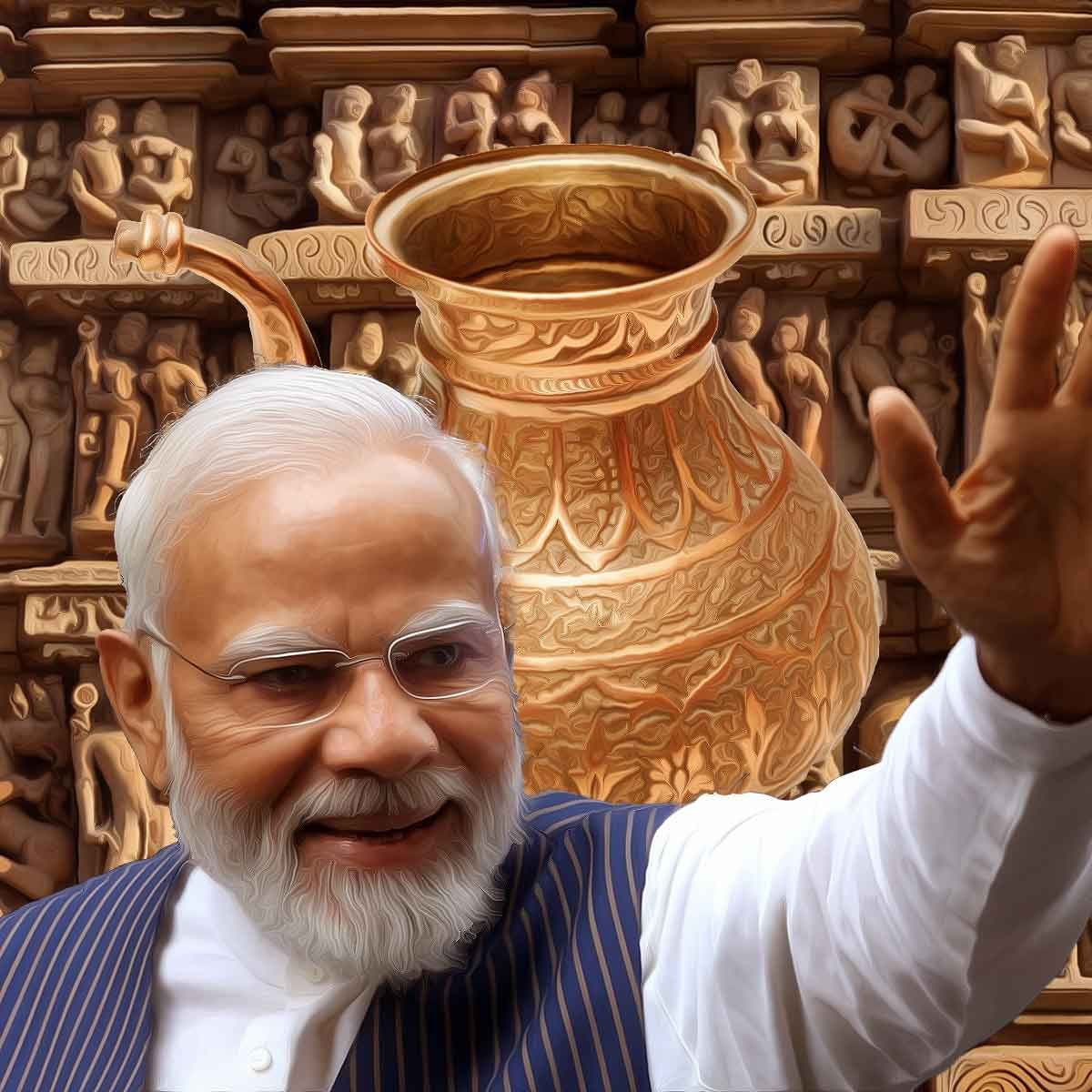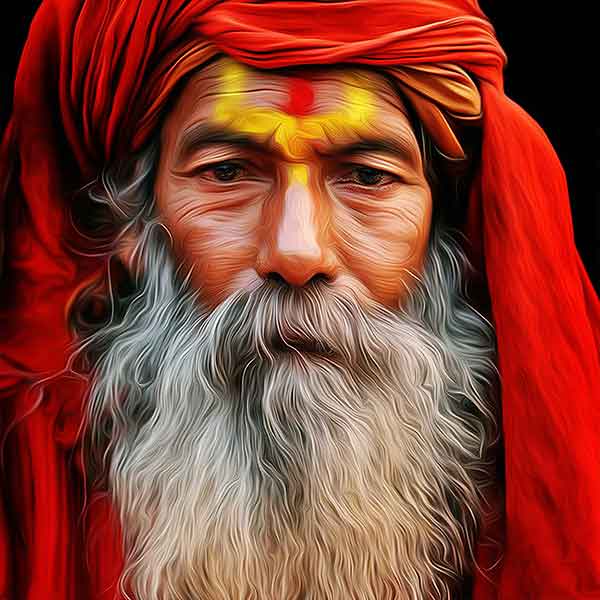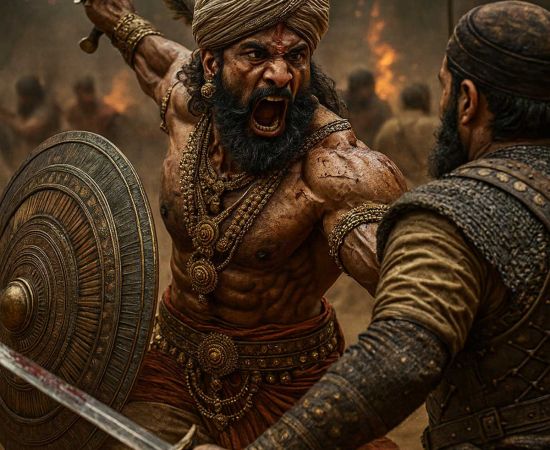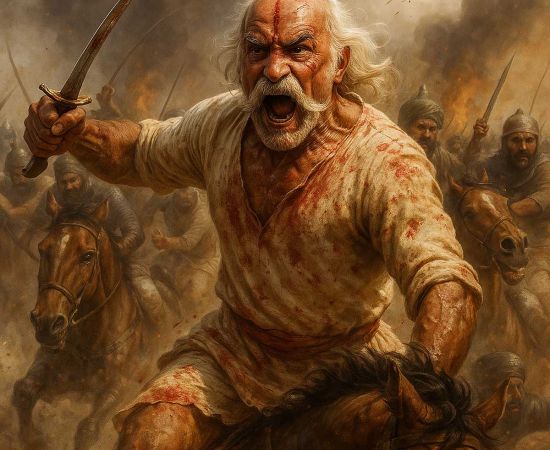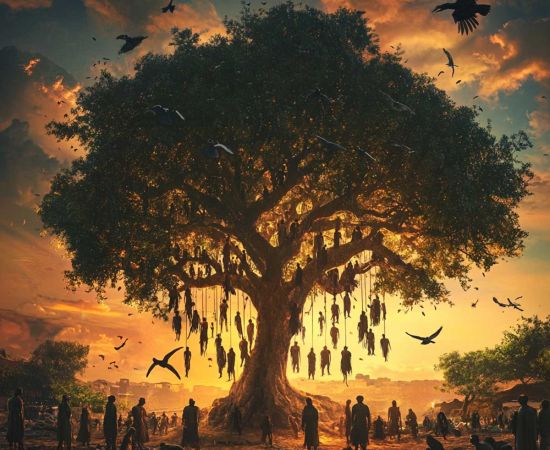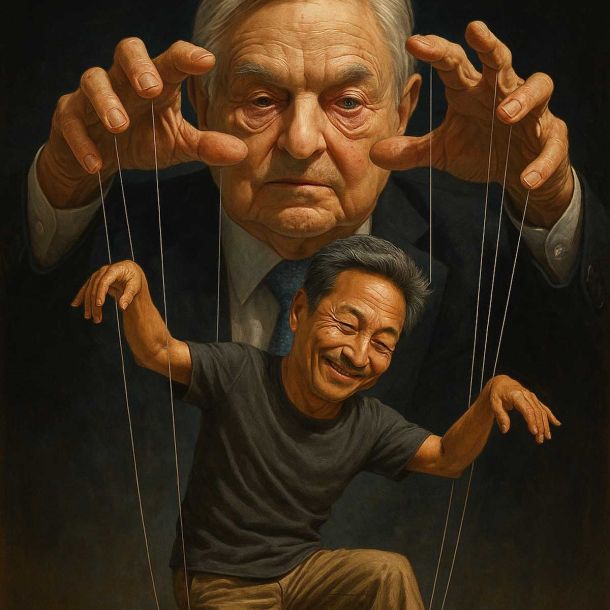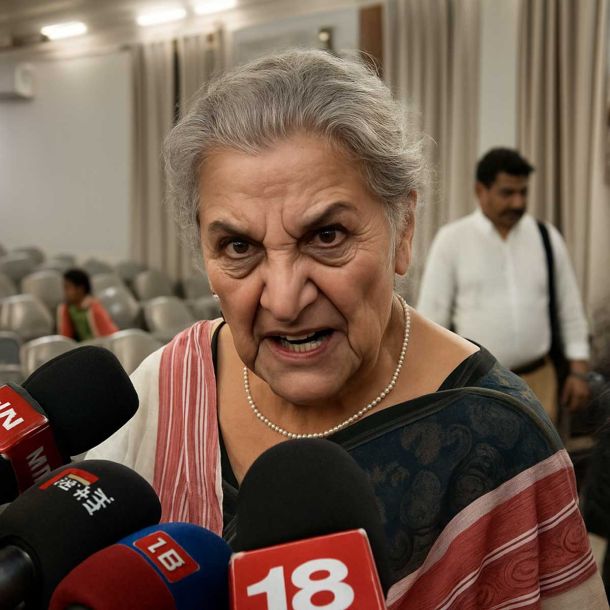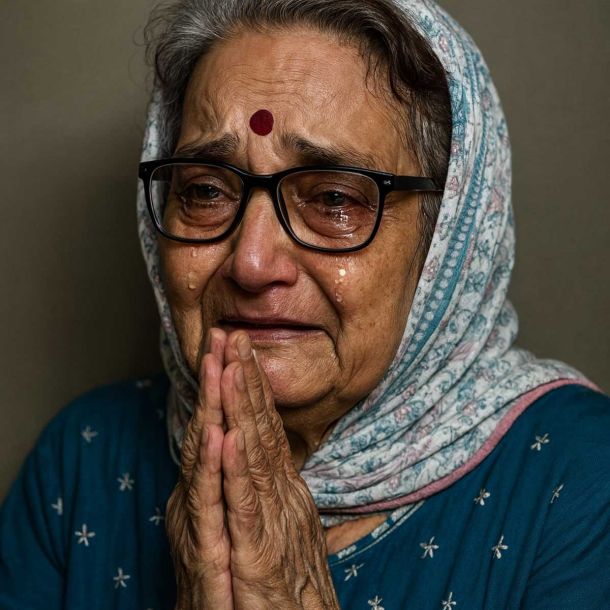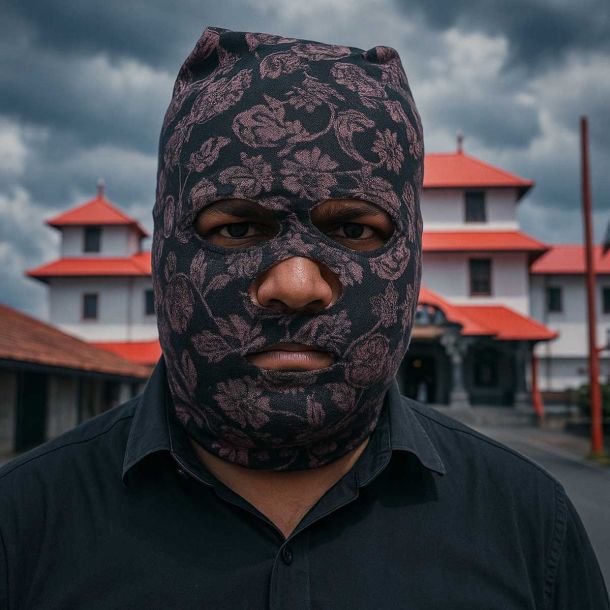MORE COVERAGE
Twitter Coverage
Satyaagrah
Written on
Satyaagrah
Written on
Satyaagrah
Written on
Satyaagrah
Written on
Satyaagrah
Written on
JOIN SATYAAGRAH SOCIAL MEDIA
At Canada’s Khalsa Day Parade, terrorist Santokh Singh Khela stood with Pierre Poilievre as “Kill Modi” chants rang out, Khalistani flags waved, Nijjar was glorified, and SFJ terrorists pushed their anti-India agenda with jailed Modi cutouts on display

On 20th April, a deeply controversial moment unfolded at the Khalsa Day Parade in Surrey, British Columbia, when Pierre Poilievre, leader of Canada’s Conservative Party and a contender for the Prime Minister’s post in the upcoming General Elections, shared the stage with none other than Santokh Singh Khela. Khela is not just a political activist—he is a convicted figure associated with Babbar Khalsa, a Khalistani terrorist outfit, and has a direct connection to one of the deadliest aviation terror attacks in history: the Kanishka Air India bombing that took the lives of 329 people, most of whom were Canadian citizens.
|
What made the event even more disturbing was the nature of the slogans and imagery present during the parade. Loud chants such as “Kill Modi Politics” echoed through the crowd, clearly targeting Indian leadership. Meanwhile, posters honoring Talwinder Singh Parmar, the man identified as the mastermind behind the Kanishka bombing, were prominently displayed, glorifying his violent legacy.
Investigative journalist Bezirgan Mocha documented these scenes through a series of videos. These clips clearly showed Khalistan flags being waved in broad daylight and visuals that were both shocking and symbolic. Cardboard cut-outs of Prime Minister Narendra Modi, Home Minister Amit Shah, and External Affairs Minister Dr S. Jaishankar were locked behind bars in a mock jail cell, all clad in orange prison uniforms and shackled with handcuffs, in an apparent and disrespectful display aimed at mocking Indian governance.
In a particularly alarming video shared by Mocha, Santokh Singh Khela is seen delivering a speech while holding an axe in his hand. With intense conviction, he said, “We will keep fighting till Khalistan gets freedom. We will fulfil the dream of Hardeep Bhai (Hardeep Singh Nijjar). We will lead the war for Khalistan.” Behind him stood large posters of Hardeep Singh Nijjar, a designated Khalistani terrorist, who was shot dead in Canada and has since become a symbol for the separatist movement abroad.
Adding to the gravity of the situation, Mocha revealed that he had spoken with Khela just a day prior to the event. During that conversation, Khela confirmed that he had indeed been convicted for conspiracy, though he declined to share specific details. He was released after six years in prison, reportedly because the prosecution failed to conclusively prove his role in the bombing, as per sources familiar with the case.
When questioned about his status within Babbar Khalsa, Khela denied holding a leadership position, saying with a smirk, “No, I am a sewadar of Khalsa Panth.” But when Mocha pointed out that the Babbar Khalsa insignia was visible on his back, Khela brushed it off, claiming that it was merely the emblem of the Khalsa Panth. He then reiterated his intentions by saying, “We will continue the fight. We want to liberate Punjab from India. The fight will continue until we get the liberation, independent Khalistan. We are supporting the peaceful referendum which is going on.”
Perhaps the most alarming visual came towards the end of the footage, where several Sikh youth were seen wearing t-shirts marked with ‘AKF’ on the back. AKF stands for Anandpur Khalistan Fouj, a recently formed terrorist militia that was being built by Amritpal Singh, a self-styled Khalistani preacher who was later elected as an MP. At the time of his arrest, Singh was actively recruiting for AKF. He is now imprisoned under the National Security Act (NSA) at a jail in Assam. Though earlier reports hinted that the Punjab Government might revoke his NSA status, fresh updates confirm that the NSA has been extended for another year.
The Khalsa Parade, once considered a celebration of cultural pride and community spirit, has now become a platform for extremist rhetoric and militant posturing, as evident from the presence of both radical individuals and controversial symbols.
|
Khela Masterminded the Air India 112 Bombing
The involvement of Santokh Singh Khela in terrorist activities is not a recent development. His name first came into the spotlight in May 1986, when five individuals associated with the Babbar Khalsa terrorist organisation were charged with plotting to blow up Air India Flight 112. This flight was scheduled to depart from John F. Kennedy Airport in New York.
While three of the accused were eventually acquitted by the Canadian court, Santokh Singh Khela and Kashmir Singh Dhillon were convicted of conspiring to commit mass murder by attempting to sabotage the Air India aircraft. The Quebec Superior Court sentenced them to life imprisonment in 1987, marking a severe judgment in a case tied to aviation terrorism.
The prosecution argued that the conspiracy was conceived on 4th April 1986, aiming to attack an Air India flight set to leave New York on May 30. All five accused were based in Montreal, Quebec. But what came out later during investigations was even more alarming. Khela had already been under surveillance by the Canadian Security Intelligence Service (CSIS) since at least May 1985. A phone conversation recorded between Khela and Talwinder Singh Parmar—the notorious mastermind of the Air India Flight 182 bombing—provided a chilling glimpse into the network of terror functioning within Canadian borders.
When the court pronounced its verdict, Justice Claire Barrette-Joncas made a powerful statement during sentencing. She said, “The crime you were found guilty of is so mind-boggling that the primary end of these sentences must be deterrence, a firm notice to you and any would-be terrorist that such conduct is not to be considered lightly in Canada.”
However, despite the gravity of the charges, six years later, Khela was acquitted due to serious lapses on the part of the Crown prosecutors, who failed to disclose key information during the trial. The Canadian government had to issue an official apology to Khela, a fact he later confirmed in a conversation with investigative journalist Mocha Bezirgan.
Shockingly, Khela was later awarded by Ajaib Singh Bagri, a known associate of Talwinder Singh Parmar and another key figure in the Khalistani terror web. According to Mocha Bezirgan, the award ceremony took place in Calgary, adding insult to injury for victims of terrorism.
Ajaib Singh Bagri holds his own dark legacy. Apart from his association with the 1985 Kanishka bombing, he is also infamous for openly declaring his hatred against Hindus. He once said, “Until we kill 50,000 Hindus, we will not rest!”, a horrific statement made during the founding convention of the World Sikh Organization, as reported by journalist Terry Milewski, who has covered the Khalistani movement for decades.
The Kanishka bombing itself remains one of the most devastating terrorist acts in global aviation history. On June 23, 1985, Air India Flight 182, codenamed “Kanishka”, was blown up mid-air over the Atlantic Ocean, off the coast of Ireland. The flight was en route from Montreal to London, and all 329 passengers and crew, mostly Canadians of Indian descent, died in the blast. The explosion was triggered by a bomb placed in the cargo hold, and it underscored how the planning and execution of such a massive terror attack had taken place entirely within Canada.
Key conspirators of the Kanishka tragedy, including Talwinder Singh Parmar and Inderjit Singh Reyat, were also deeply connected to Babbar Khalsa, further exposing the depth of the Khalistani terror network operating with impunity.
Much of the blame for this attack continues to be directed at former Canadian Prime Minister Pierre Trudeau, as reports suggest that his government’s leniency towards Parmar allowed the plot to come to life. It was in 1984, just a year before the bombing, that Parmar told his Khalistani followers, “Indian planes will fall from the sky.” This chilling prediction would become a horrifying reality just months later.
Today, even after decades have passed, the Kanishka bombing remains etched in Canada’s collective memory as a grim reminder of extremism flourishing within its borders, often under the guise of activism and freedom of speech.
|
Santokh Singh Khela Is Associated with the Banned Terrorist Organisation Sikhs for Justice (SFJ)
Not only is Khela a convict and awardee in Khalistani circles, but he is also deeply involved in the activities of Sikhs for Justice (SFJ), a banned terrorist organisation. He is known to act as the organiser of the Khalistan referendum conducted under the banner of SFJ at Dashmesh Gurdwara.
The Government of India officially banned Sikhs For Justice on July 10, 2019, under the Unlawful Activities (Prevention) Act (UAPA) for carrying out anti-India campaigns and inciting unrest among youth. Its founder, Gurpatwant Singh Pannu, has been declared a terrorist and remains on the radar of Indian and global intelligence agencies.
The organisation's most public agenda—Referendum 2020—was a push for carving out a separate Khalistan state from India’s Punjab region. Since its formation, SFJ has employed numerous strategies to target and radicalize young Sikhs, often offering financial incentives to provoke them into rebellion against the Indian state.
A day before the Khalsa Day Parade, Santokh Singh Khela was seen preaching about the so-called Khalistan Referendum, drumming up support for SFJ's ongoing campaign. In footage recorded by Mocha Bezirgan, Khela is seen standing among a group of pro-Khalistani individuals while they loudly chant, “Khalistan Zindabad.”
The Khalistan referendum, while framed by SFJ as a democratic exercise, has been widely criticized as a propaganda tool to stoke division. Events like the one at Dashmesh Gurdwara, where Khela played a prominent role, often feature inflammatory rhetoric and symbols of Khalistani militancy, such as images of slain terrorists like Hardeep Singh Nijjar. These gatherings exploit Canada’s liberal policies to advance a separatist agenda, raising questions about the balance between free expression and the promotion of extremism. For many in India, Khela’s open involvement with a banned group like SFJ is a stark reminder of Canada’s perceived leniency toward Khalistani activists, a point of contention that continues to strain bilateral ties.
His public association with a banned terror outfit, his open support for separatism, and his history of criminal conviction point to a disturbing trend of Khalistani extremists finding space, voice, and even celebration in parts of Canada—under the eyes of global scrutiny.
 Support Us
Support Us
Satyagraha was born from the heart of our land, with an undying aim to unveil the true essence of Bharat. It seeks to illuminate the hidden tales of our valiant freedom fighters and the rich chronicles that haven't yet sung their complete melody in the mainstream.
While platforms like NDTV and 'The Wire' effortlessly garner funds under the banner of safeguarding democracy, we at Satyagraha walk a different path. Our strength and resonance come from you. In this journey to weave a stronger Bharat, every little contribution amplifies our voice. Let's come together, contribute as you can, and champion the true spirit of our nation.
 |  |  |
| ICICI Bank of Satyaagrah | Razorpay Bank of Satyaagrah | PayPal Bank of Satyaagrah - For International Payments |
If all above doesn't work, then try the LINK below:
Please share the article on other platforms
DISCLAIMER: The author is solely responsible for the views expressed in this article. The author carries the responsibility for citing and/or licensing of images utilized within the text. The website also frequently uses non-commercial images for representational purposes only in line with the article. We are not responsible for the authenticity of such images. If some images have a copyright issue, we request the person/entity to contact us at This email address is being protected from spambots. You need JavaScript enabled to view it. and we will take the necessary actions to resolve the issue.
Related Articles
- Sikhs for Justice General Council from the USA took the responsibility for blocking Modi in Punjab: SC Lawyers get threatening calls from Khalistani organization SFJ
- "From Muslim to Sikh to Extremist": Toofan Singh, a Nihang Sikh & former Muslim, falsely accused Bageshwar Dham Sarkar of targeting Sikhs, leading to baseless threats. Sarkar's actual warning was against Christian missionaries converting Hindus in Punjab
- How Republic day 2021 succumbed to violence and desecration of Indian tricolor at the Red Fort created shock waves across the country: Khalistanis gave a call to pick up arms on social media apps
- Sikhs for Justice accused Russia of aiding India’s RA&W in killing Khalistani terrorist Nijjar; Russia denied claims, called SFJ’s $25K reward for tracking diplomats unacceptable, sought law enforcement action, and protection under Vienna Convention laws
- “Kashmiri freedom fighters, leave valley – reach Delhi to sabotage Republic Day, it's now or never for Khalistan" - Gurpatwant Singh Pannu of the Khalistani terrorist organization SFJ has called out the anti-India separatists and terrorists
- Barjinder Singh Parwana instigated Sikhs for Patiala violence against the ‘Khalistan Murdabad March’: Urged armed Sikhs to gather from all over Punjab, famous Maa Kali Mandir was attacked by Nihang Sikhs
- "From Father to Son: A Troubling Legacy": In a sinister echo of the past, Canadian PM Trudeau openly endorses Khalistani elements against India, uncovering the dark history of Pierre Trudeau shielding notorious Kanishka bombing mastermind Talwinder Parmar
- Call raised for a Patiala Bandh by Hindu Groups after armed Khalistani mob attacked a Kali temple and ran amok in the city brandishing swords: FIR registered against Khalistanis
- "We will see where their Kali Mata will go to hide and who forced your Durga to dance naked” the Nihang Sikh insulted and threatened Hindus with violence after Khalistanis unleashed violence in Patiala
- "Khalistani ideology is mainly a catalogue of blunders": Punjab Police recovered incriminating material including holograms of Anandpur Khalsa Fauj, a firing range built by Amritpal Singh, and weapon training videos from Tejinder Singh alias Gorkha Baba
- "जोबोले सो निहाल": A Nihang Sikh in Punjab again kills over sacrilege claims, posting a pre-murder video, this shocking act adds to a disturbing trend of violence in Sikhi, following a history of similar sacrilege-related cases & escalating confrontations
- Dangerous plots of Khalistan uprising and Hindu genocide, hurling abuses to Hindu Gods, arrest of Hindus for ‘blasphemy’ when retaliating - The menacing truth of underbelly of Clubhouse
- "Madness, mayhem, erotic vandalism - while we scream and perish, History licks a finger and turns the page": Attack on Swaminarayan Mandir proves Trudeau’s overt support to Khalistanis has let Canada become a seedbed for Khalistanis - nurtured by ISI
- "Dystopia": Indian student Tejeshwar Kalia, facing 14 years in jail for self-defense in Peterborough, remains positive despite hardships; his GoFundMe campaign, launched to cover legal fees, was pulled, intensifying the struggle in this self-defense case
- "Life deals you a lot lessons, some people learn from it, some people don't": Notorious Khalistani terrorist & radical separatist Hardeep Singh Nijjar shot dead within the premises of the Guru Nanak Sikh Gurdwara Sahib in Surrey, British Columbia, Canada
